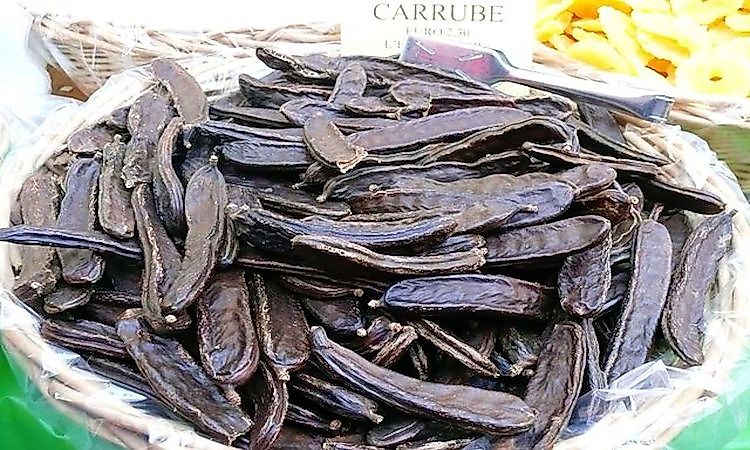Top Carob Producing Nations In The World

What Is Carob?
Carob tree (Ceratonia siliqua) is a species of a flowering evergreen shrub popular for its sweet edible pods and also as an ornamental plant in a garden. Although the Carob tree is used widely in agriculture, it is native to the Mediterranean regions. The tree can be found growing extensively in the wild of the Eastern Mediterranean region. Carob belongs to the legume family with the tree growing to 15 m in height. The crown of a Carob tree is broad and semispherical supported by a thick trunk. Carob tree blossoms in autumn and produces small and numerous flowers. Its fruits are legumes commonly referred to as pods that are elongated, compressed or curved. The ripe seeds often fall to the ground and are eaten by various animals including Swine. The plant is mentioned several times in the Bible and also in Talmud.
Uses Of Carob
The use of carob can be traced back to Mesopotamian culture and was highly prized because of the many uses. Carob is widely cultivated for its pods and also as an ornamental tree in the garden. The dried or roasted seeds can be consumed directly or processed further into other forms for consumption. The dried pods can be ground into powder in place of cocoa powder. The powdered carob is mildly sweet and can be used as an ingredient in baking cakes and cookies or as a substitute for chocolates. Carob pod meal is an energy-rich feed for livestock, in particular for ruminants. The carob pulp is rich in sugar and cellulose while the embryo of the seed is rich in protein. Both the pulp and embryo can be used for human and animal nutrition. In Malta and Cyprus Carob syrup is a traditional medicine for a cough and sore throat. The syrup can also be used as a sweetener and a source of calcium. Carob juice is part of drinks during the Islamic month of Ramadan.
Cultivation Of Carob
Carob trees can grow by themselves in the wild or can be cultivated in gardens and orchards. Seeds are the most common propagation medium as opposed to vegetative propagation practiced in orchards because of the low rooting potential. The sowing is first done in nurseries and then transplanted to the field. The Carob tree reaches its bearing at the age of 20 to 25 years where the yields stabilize. Harvesting is the most labor-intensive part of carob cultivation. Harvesting is done by knocking or plucking the fruits with a long stick. The harvesting is done when the tree is also flowering, therefore, making it a delicate task. The seeds are then separated from the pulp in a process called kibbling.
Claimed Benefits Of Carob
Carob has active constituents which include calcium, Phosphorus, Potassium, Sodium, and Magnesium. The Carob fruit is abundant with sources of proteins, carbohydrates, and trace minerals. The combinations of these minerals and relatively high nutritional values give carob the claimed health benefits, although there is limited scientific research to support the claims. Carob has all along been used to reduce and control diarrhea and it is highly effective when taken with oral rehydration solution. Carob also can reduce cholesterol levels. The high fiber content makes it effective in decreasing the cholesterol levels in the blood stream and can improve the ratio of HDL to LDL in the blood. Carob has been used for long to control weight, and it has been known as the weight reducing tonic because it stimulates metabolism and improves digestion. Carob also has been used in managing type 2 diabetes and can lower insulin. There are other numerous health benefits associated with carob.
Top Carob Producing Countries
The top carob producing countries in the world according to the UN Food and Agricultural Organization include Spain which produced over 40,000 metric tons followed by Italy and Portugal at 30,841 and 23,000 metric tons respectively. The carob trees in Spain are grown in the Southern and Eastern area of Spain and are ground and roasted before they are exported to countries in Europe and America. In Italy, carob is mainly used to make thick-textured flour which is used in the baking of biscuits and chocolates. The other main carob producing nations include Greece, Morocco, Turkey, and Cyprus.
Top Carob Producing Nations In The World
| Rank | Country | Production (in metric tons), 2012 |
|---|---|---|
| 1 | Spain | 40,000 |
| 2 | Italy | 30,841 |
| 3 | Portugal | 23,000 |
| 4 | Greece | 22,000 |
| 5 | Morocco | 20,500 |
| 6 | Turkey | 14,218 |
| 7 | Cyprus | 5,186 |
| 8 | Algeria | 3,136 |
| 9 | Lebanon | 2,300 |











